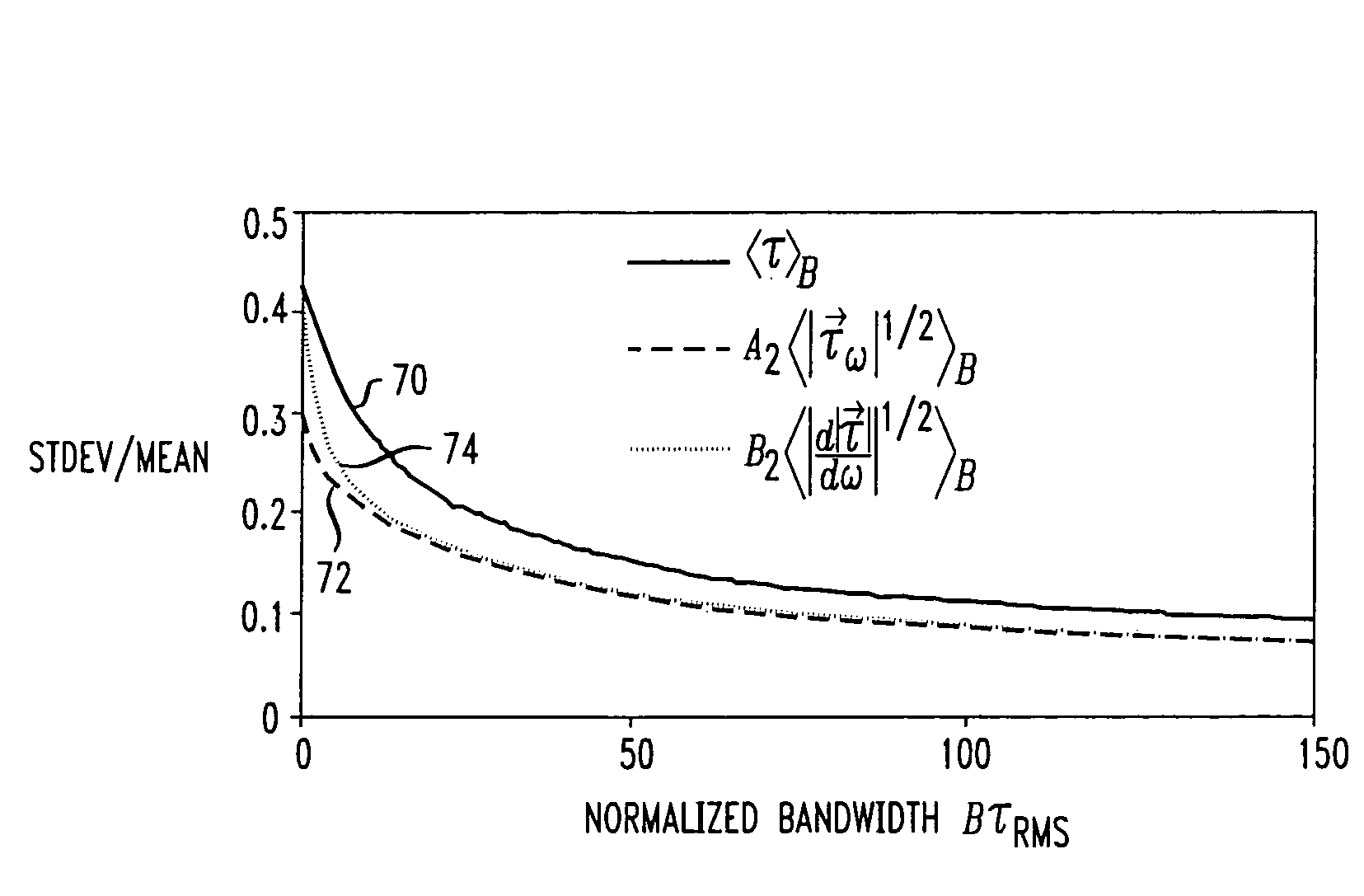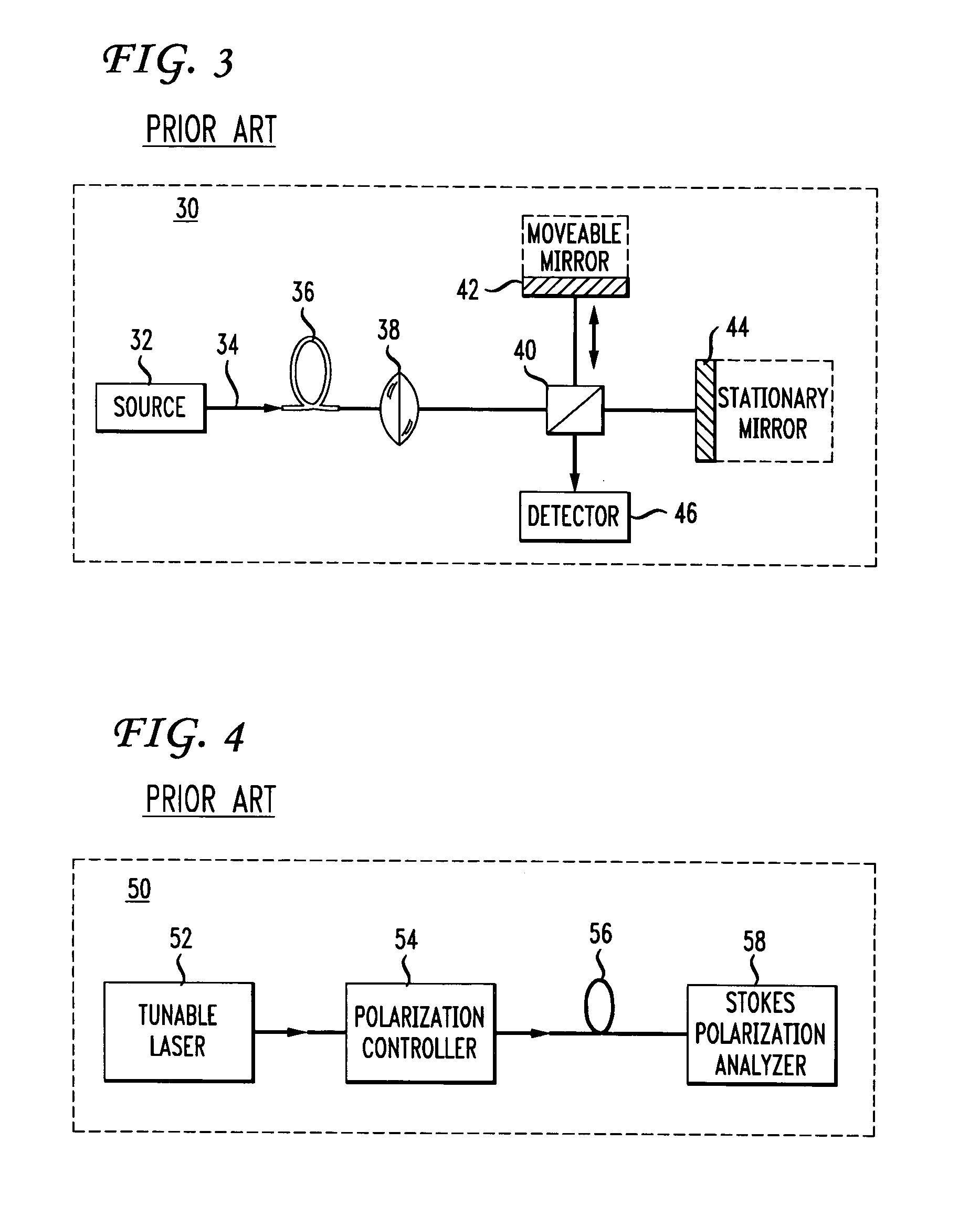Method for increasing accuracy of measurement of mean polarization mode dispersion
a technology of mean polarization mode and measurement method, which is applied in the direction of instruments, optical apparatus testing, structural/machine measurement, etc., can solve the problem of significant broadening of optical pulse propagation along long lengths of fiber, and achieve the effect of improving the accuracy of measuring a differential group delay (dgd)
- Summary
- Abstract
- Description
- Claims
- Application Information
AI Technical Summary
Benefits of technology
Problems solved by technology
Method used
Image
Examples
Embodiment Construction
[0045]The present invention relates to improving the accuracy of calculating a true mean differential group delay (DGD) or a true mean-square DGD τ from a measurement of polarization mode dispersion (PMD). The present invention provides a method for correcting a systematic error in a conventional conversion of measured mean-square DGD measurements to a true mean DGD τ. The systematic error stems from the use of a measurement source of a finite bandwidth B, and from the conventional conversion applied to measured root mean square DGD √{square root over (τ2B)} to obtain an estimate of true mean DGD τ. By incorporating improved averaging techniques to the measured root mean square DGD √{square root over (τ2B)} obtained with conventional PMD measurement apparatus, the present invention offers improved resolution in true mean τ or true mean-square DGD τ2 measurements.
[0046]The present invention also provides a method to improve accuracy in measurements of the true mean DGD τ of optical f...
PUM
| Property | Measurement | Unit |
|---|---|---|
| length | aaaaa | aaaaa |
| polarization mode dispersion measurement | aaaaa | aaaaa |
| time- | aaaaa | aaaaa |
Abstract
Description
Claims
Application Information
 Login to View More
Login to View More - R&D
- Intellectual Property
- Life Sciences
- Materials
- Tech Scout
- Unparalleled Data Quality
- Higher Quality Content
- 60% Fewer Hallucinations
Browse by: Latest US Patents, China's latest patents, Technical Efficacy Thesaurus, Application Domain, Technology Topic, Popular Technical Reports.
© 2025 PatSnap. All rights reserved.Legal|Privacy policy|Modern Slavery Act Transparency Statement|Sitemap|About US| Contact US: help@patsnap.com



